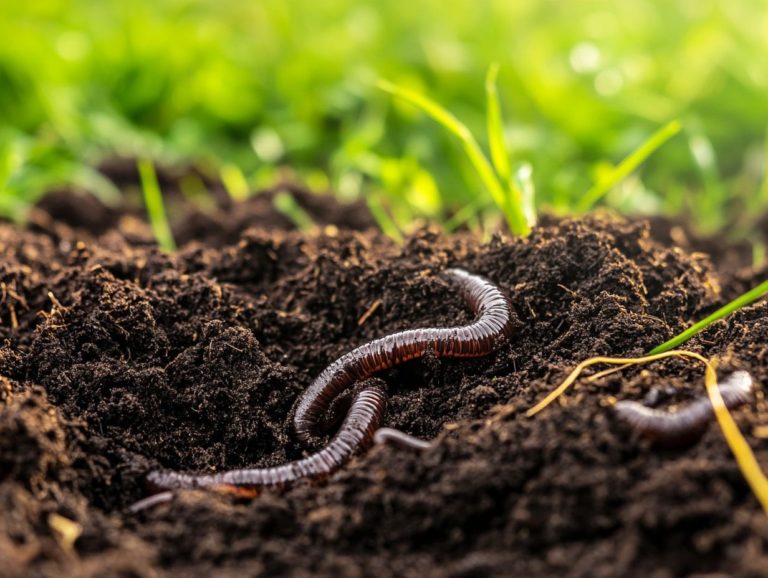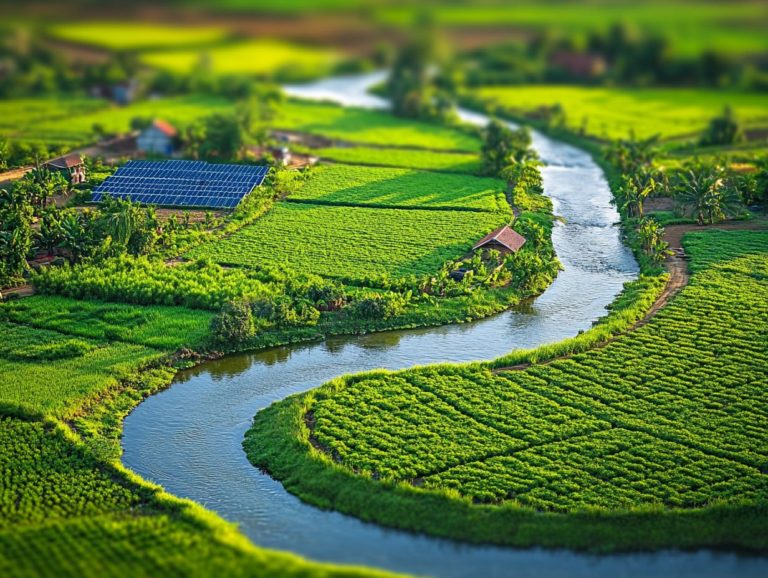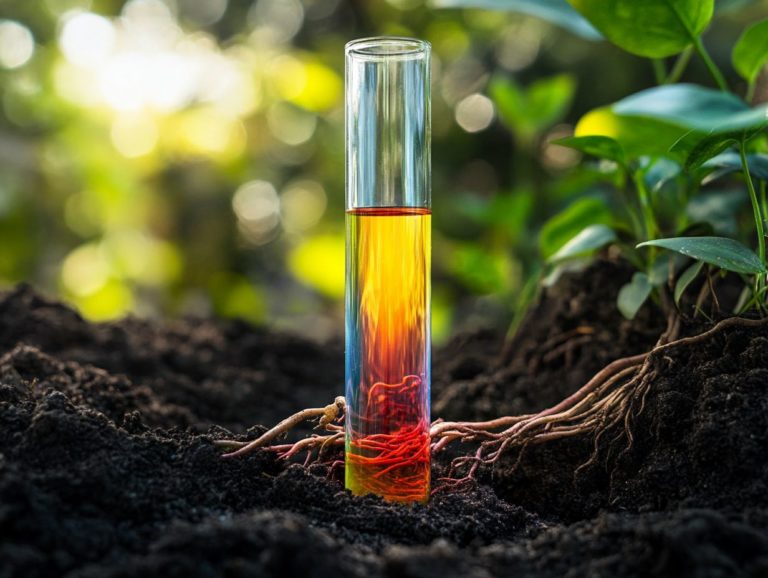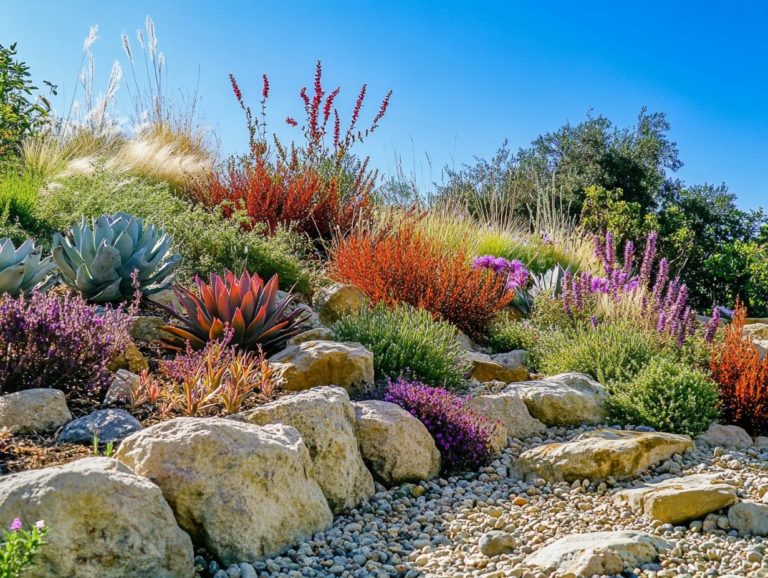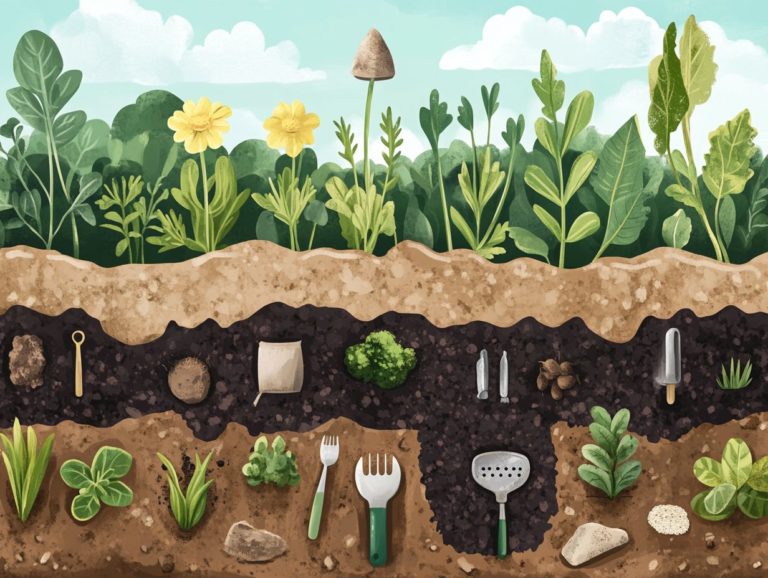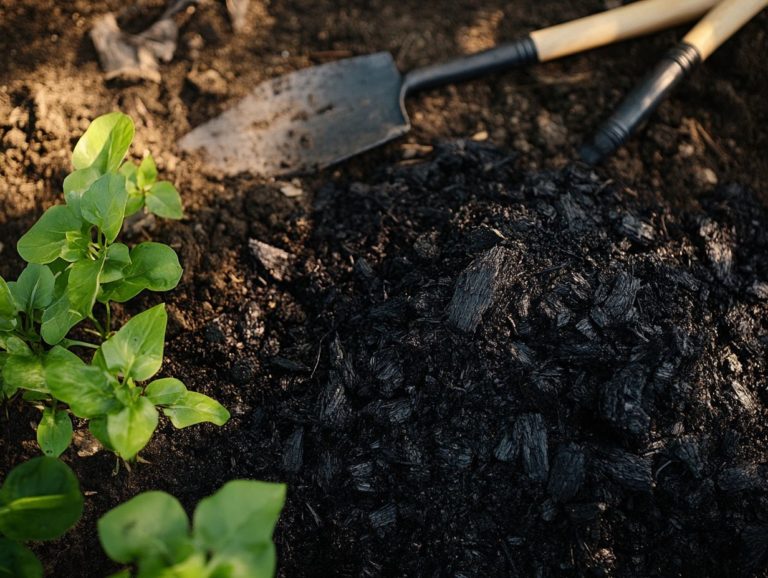The Benefits of No-Till Gardening for Soil
No-till gardening is revolutionizing your approach to cultivating plants and nurturing soil. By minimizing soil disturbance, this practice fosters a vibrant underground ecosystem, which is crucial for maintaining healthy gardens.
This article delves into the essential role soil plays in gardening, the myriad benefits of adopting no-till methods, and practical tips for implementing these techniques. It also tackles some common misconceptions that may be hindering your embrace of this sustainable approach.
Get ready to transform your gardening experience with healthier, more productive plants!
Contents
- Key Takeaways:
- The Importance of Soil Health
- The Benefits of No-Till Gardening for Soil
- How to Implement No-Till Gardening
- Common Misconceptions about No-Till Gardening
- Frequently Asked Questions
- What is no-till gardening and how does it benefit soil?
- How does no-till gardening improve soil health?
- Can no-till gardening reduce the need for fertilizers and pesticides?
- Are there any cost savings associated with no-till gardening?
- How does no-till gardening benefit the environment as a whole?
- Is no-till gardening suitable for all types of soil?
- Is no-till gardening suitable for all types of soil?
- What are the cost savings associated with no-till gardening?
- How does no-till gardening benefit the environment?
- How does no-till gardening improve soil health?
- Can no-till gardening reduce the need for fertilizers and pesticides?
Key Takeaways:
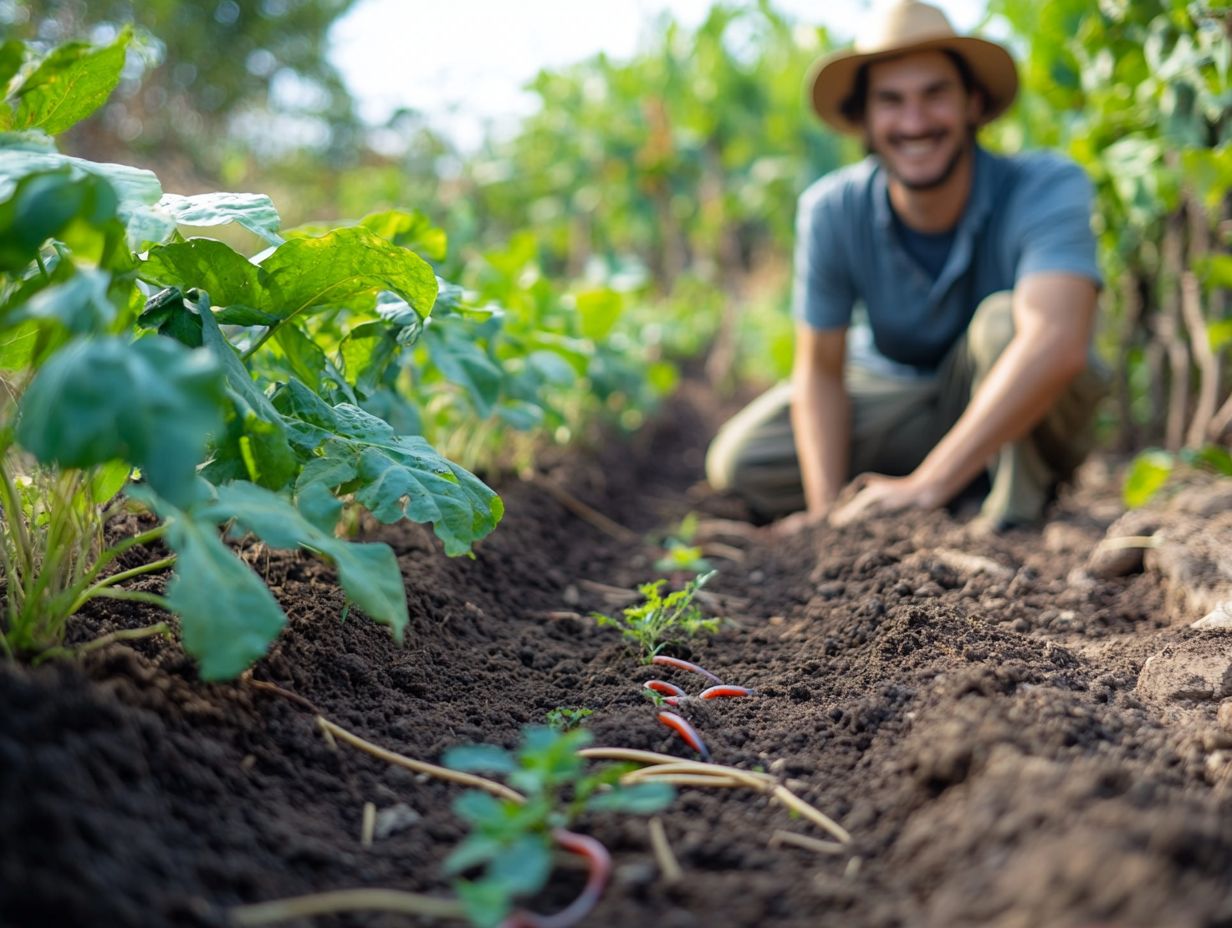
- No-till gardening preserves soil health by retaining nutrients and beneficial microorganisms, leading to healthier plants.
- This practice reduces erosion and compaction, maintaining soil structure and fertility for sustainability.
- With the right tools, implementing no-till gardening is easy and effective, dispelling common myths about it.
What is No-Till Gardening?
No-till gardening is a remarkable agricultural technique that minimizes soil disturbance by steering clear of traditional tilling methods. This approach not only enhances the health of your soil but also supports crop rotation planting different crops in the same area at different times to maintain soil nutrients boosts moisture retention, and fosters beneficial organisms like earthworms and microorganisms.
By embracing no-till gardening, you can improve soil structure and fertility while effectively managing weeds and cutting down on greenhouse gas emissions tied to conventional tillage practices.
Preserving soil integrity is vital, as no-till gardening plays a crucial role in nutrient cycling, ensuring that essential elements remain readily available to your plants. This method significantly reduces erosion, a common headache in conventional farming, since the cohesive structure of the soil helps retain topsoil during harsh weather conditions.
Moreover, avoiding tilling promotes an ecosystem that maximizes carbon sequestration, or capturing and storing carbon dioxide from the atmosphere, offering an environmental advantage. Ultimately, these benefits lead to increased crop yields over time, enhancing food security while minimizing the ecological footprint of agriculture.
The Importance of Soil Health
Soil health stands as a cornerstone of sustainable agriculture, directly impacting your crop productivity, water retention, and the delicate balance of the ecosystem. When you nurture healthy soil, you’re fostering an environment rich in organic matter, which in turn supports microbial diversity and nutrient cycling.
This ensures that your crops receive the essential nutrients they need while maintaining optimal moisture levels for growth. Moreover, adopting practices that enhance soil health not only prevents erosion but also improves soil structure and reduces greenhouse gas emissions.
Act now to embrace these essential practices for a thriving garden!
Understanding the Role of Soil in Gardening
Soil is absolutely essential in gardening; it s your foundation, providing the vital nutrients, moisture, and support that plants need to thrive. The composition and structure of your soil directly influence the health of your crops by affecting water retention, aeration, and the ability to nurture beneficial organisms like earthworms and microorganisms.
By grasping the intricate relationship between soil properties and plant development, you can implement effective practices, such as soil testing and adding organic matter, to cultivate a flourishing ecosystem that boosts your crop yields.
The texture of your soil essentially the balance of sand, silt, and clay plays a significant role in how well your plants can access moisture and nutrients. Well-structured soil promotes better drainage while also retaining the vital moisture necessary for healthy growth.
Maintaining a balanced pH and organic content creates an ideal environment for both roots and microorganisms. Regular soil analysis helps you identify deficiencies or imbalances, allowing you to take targeted corrective measures.
By embracing enhanced practices like crop rotation and cover cropping growing plants that cover the soil during off-seasons to prevent erosion you can further enrich your soil, paving the way for sustainable and fruitful gardening experiences.
The Benefits of No-Till Gardening for Soil
The benefits of no-till gardening for your soil are truly remarkable. This approach significantly enhances soil health and champions sustainable agricultural practices, much like the benefits of raised beds for soil care.
No-till gardening helps create a healthy environment for microorganisms, boosting soil fertility and improving moisture retention. This method also prevents erosion and supports effective crop rotation strategies.
Ultimately, it creates a more resilient agricultural system that flourishes in varied environmental conditions while also reducing the ecological footprint of farming.
Retaining Nutrients and Microorganisms
One of the primary advantages of no-till gardening lies in its ability to retain essential nutrients and foster a diverse population of microorganisms within the soil. By minimizing soil disruption, this practice helps beneficial organisms like earthworms thrive and enhances nutrient cycling through the addition of organic matter and compost.
As a result, start cultivating healthier crops with higher nutrient density and improved overall soil fertility. This significantly reduces your reliance on synthetic fertilizers and embraces a more sustainable gardening approach.
By maintaining the integrity of soil structure, no-till methods prevent erosion and moisture loss. This ensures that vital nutrients remain accessible to your plants.
The incorporation of organic matter, such as aged compost, boosts microbial activity. These organisms feast on decaying materials, breaking down complex compounds into simpler forms that your plants can easily absorb.
In this vibrant ecosystem, a variety of microbes work together, creating a balanced nutrient supply while enhancing soil aeration and water retention. This holistic approach nurtures plant health and cultivates a resilient garden capable of withstanding environmental stresses.
Reducing Erosion and Compaction

No-till gardening is a remarkable practice that effectively curbs erosion and soil compaction two significant threats to sustainable agriculture. By leaving crop residues on the surface and minimizing soil disturbance, you maintain the structure and integrity of the soil, preventing the loss of valuable topsoil while enhancing moisture retention.
This means you can cultivate healthier crops, making them less susceptible to drought and nutrient deficiencies. This ultimately improves the long-term viability of both the soil and the agricultural ecosystem.
Beyond just preserving topsoil, this method creates an environment where beneficial microorganisms can flourish, forming a robust soil community that aids in nutrient cycling. The intact layers of soil promote better air infiltration and water drainage, reducing runoff and mitigating the impact of heavy rains.
By relying on these natural processes, you significantly enhance the longevity of the soil. This ensures that future generations can enjoy the rich agricultural resources it provides.
These practices support your immediate plant health and foster a balanced ecosystem conducive to sustainable gardening.
How to Implement No-Till Gardening
Implementing no-till farming requires a thoughtful approach. Specific tools and techniques play a pivotal role in maintaining soil health while championing sustainable agriculture.
Start by preparing the soil with methods like direct seeding and cover cropping, which effectively suppress weeds and enhance soil structure.
Embrace the right tools, such as no-till seeders and compost spreaders, to smooth your transition to no-till practices. This ensures your crops thrive in an optimal environment for growth and nutrient uptake.
Tools and Techniques for Successful No-Till Gardening
Successful no-till gardening relies on the right tools and techniques that allow you to minimize soil disturbance while creating optimal conditions for your crops to flourish.
No-till seeders are pivotal tools; they enable you to plant directly into untouched soil. This preserves the soil’s natural structure. Incorporating compost spreaders is also crucial. They enrich soil fertility and provide necessary nutrients to your plants without turning the soil.
Using cover crops can significantly enhance your weed management. This technique also boosts soil health through improved aeration and organic matter. Rotating your crops helps maintain a balance in nutrient uptake. It also promotes biodiversity in your garden, fostering a thriving and resilient ecosystem that embodies the principles of sustainable agriculture.
Common Misconceptions about No-Till Gardening
Despite its increasing popularity, a number of common misconceptions about no-till gardening may prevent you from embracing this advantageous approach. You might think that no-till gardening means you can skip land preparation entirely or that it simply won t cut it for weed control.
It s essential to recognize the variety of techniques available for managing weeds without resorting to traditional tillage. Understanding the drawbacks of tillage alongside the benefits of no-till gardening can help dispel these myths and encourage more sustainable agricultural practices in your own endeavors.
Addressing Concerns and Debunking Myths
Addressing concerns and debunking myths about no-till gardening is crucial for promoting its benefits. You might have heard worries regarding soil health, with many believing that no-till practices could lead to nutrient deficiencies or heightened pest pressures.
Research shows that when implemented correctly, no-till gardening actually enhances soil health. It nurtures beneficial organisms and supports the way nutrients move through the soil, creating a more sustainable agricultural system.
This method fosters the development of a vibrant soil ecosystem. In this ecosystem, earthworms and microbial life thrive, greatly benefiting plant growth. Studies reveal that these ecosystems retain moisture more effectively and reduce erosion, making them more resilient to drought conditions.
This practice also promotes carbon sequestration. It helps to combat climate change by storing carbon in the soil instead of releasing it into the atmosphere.
Focusing on these evidence-based advantages allows you to see how no-till methods positively contribute to both productivity and environmental health. Don t miss out on the benefits of no-till gardening. Start today and see the difference!
Frequently Asked Questions
What is no-till gardening and how does it benefit soil?
No-till gardening is a method where the soil is left undisturbed, unlike traditional tilling methods. This helps maintain the soil’s natural structure and microorganisms, leading to healthier and more fertile soil.
How does no-till gardening improve soil health?
No-till gardening increases soil organic matter, which provides nutrients to plants and improves soil structure. It also helps retain moisture and prevent erosion, leading to healthier and more resilient soil.
Can no-till gardening reduce the need for fertilizers and pesticides?
Yes, no-till gardening reduces the need for fertilizers and pesticides. It promotes a more balanced and diverse ecosystem in the soil, making it less susceptible to pests and diseases. It also reduces nutrient runoff, which can harm surrounding water bodies.
Are there any cost savings associated with no-till gardening?
Yes, no-till gardening can lead to cost savings in several ways. It reduces the need for expensive equipment and labor, saves money on fertilizers and pesticides, and can even increase crop yields in the long run.
How does no-till gardening benefit the environment as a whole?
No-till gardening has various environmental benefits. It reduces carbon emissions by minimizing the use of heavy machinery, conserves water by retaining moisture in the soil, and helps preserve natural habitats by promoting a diverse ecosystem in the soil.
Is no-till gardening suitable for all types of soil?
Is no-till gardening suitable for all types of soil?
Yes! No-till gardening benefits sandy, clay, and loamy soils. You may need to adjust your methods based on the specific soil type.
What are the cost savings associated with no-till gardening?
No-till gardening can also save you money in several ways. It reduces the need for expensive equipment and labor, saves on fertilizers and pesticides, and can even increase crop yields over time.
How does no-till gardening benefit the environment?
No-till gardening offers many environmental advantages. It lowers carbon emissions by minimizing heavy machinery use, helps conserve water by keeping moisture in the soil, and supports biodiversity by maintaining various organisms in the soil.
How does no-till gardening improve soil health?
No-till gardening increases the nutrients available to plants and enhances soil structure. It helps retain moisture and prevents erosion, resulting in healthier and more resilient soil.
Can no-till gardening reduce the need for fertilizers and pesticides?
Yes! No-till gardening encourages a balanced ecosystem in the soil, making it less vulnerable to pests and diseases. This approach also decreases nutrient runoff, which can be harmful to nearby water sources.

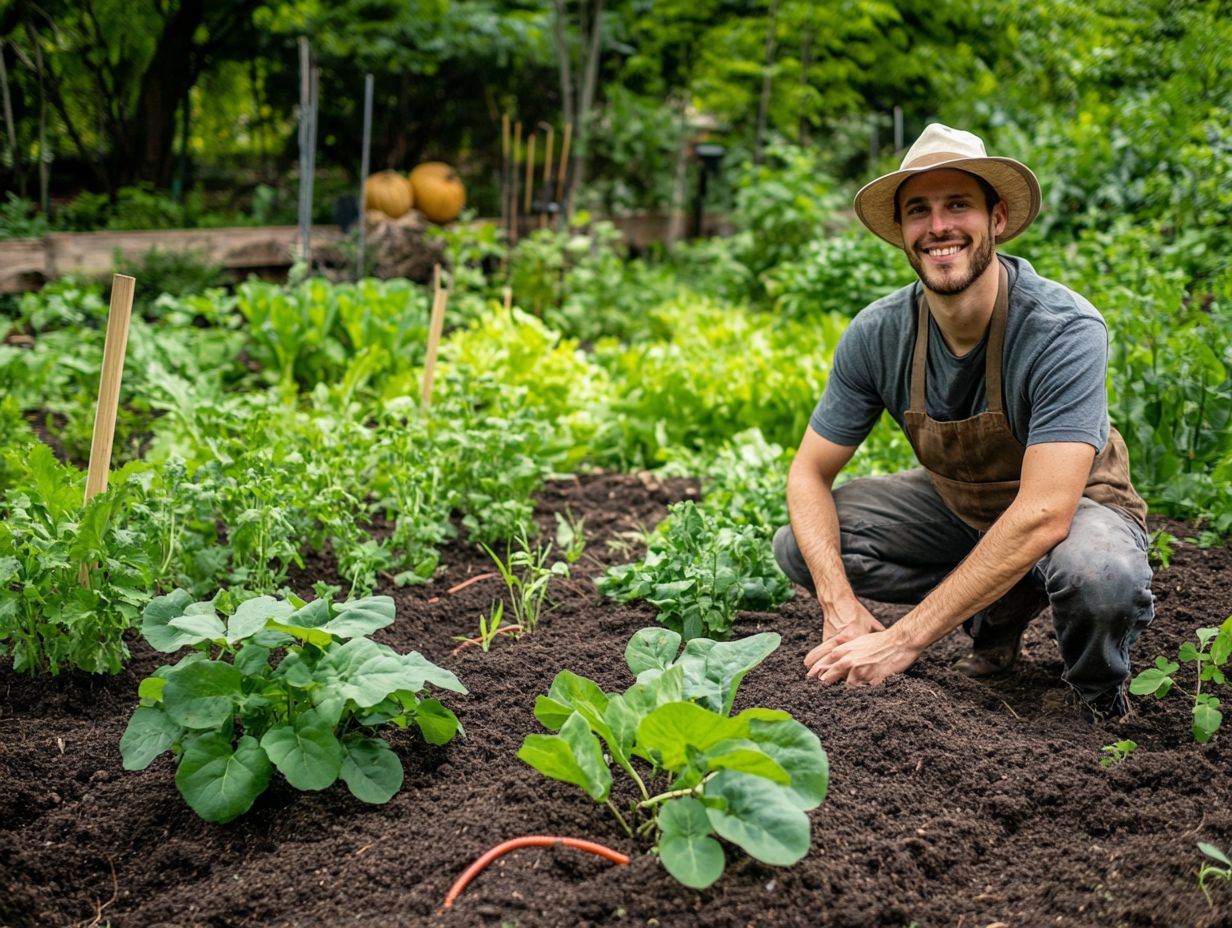
Curious about how no-till gardening can transform your garden? Let s explore its benefits further and consider giving it a try!

